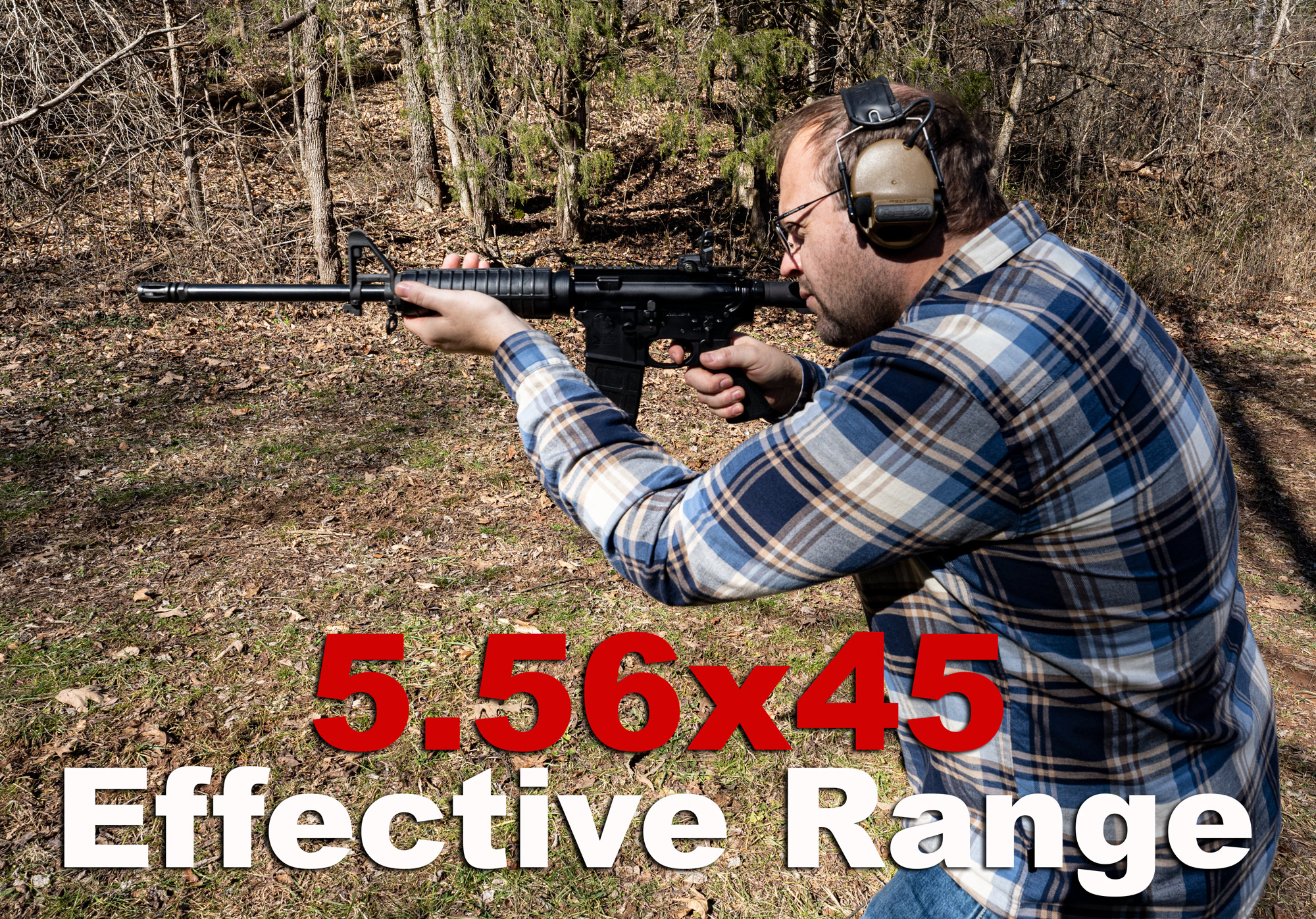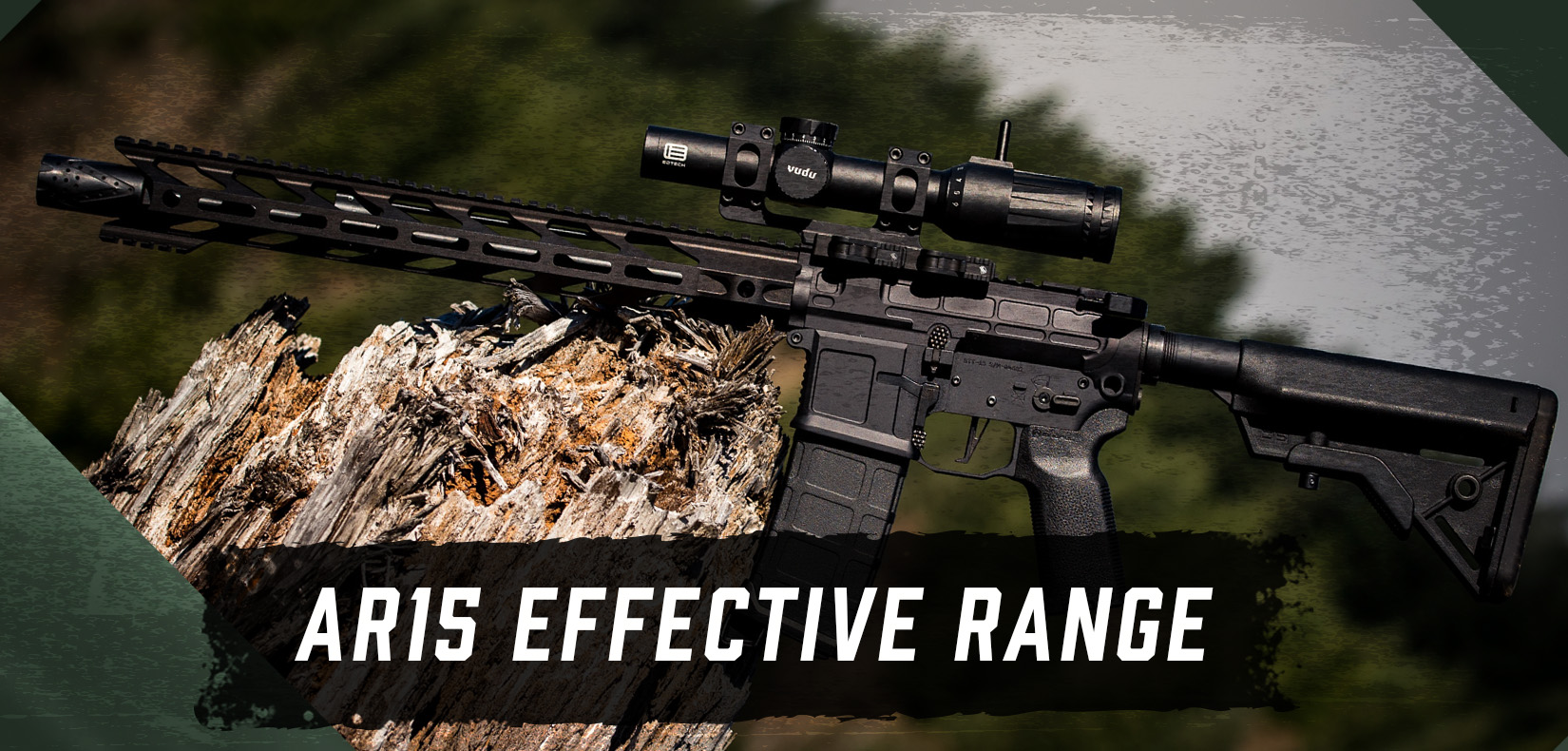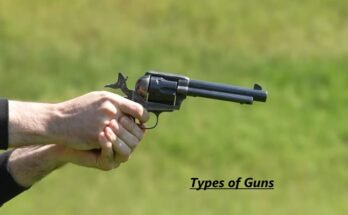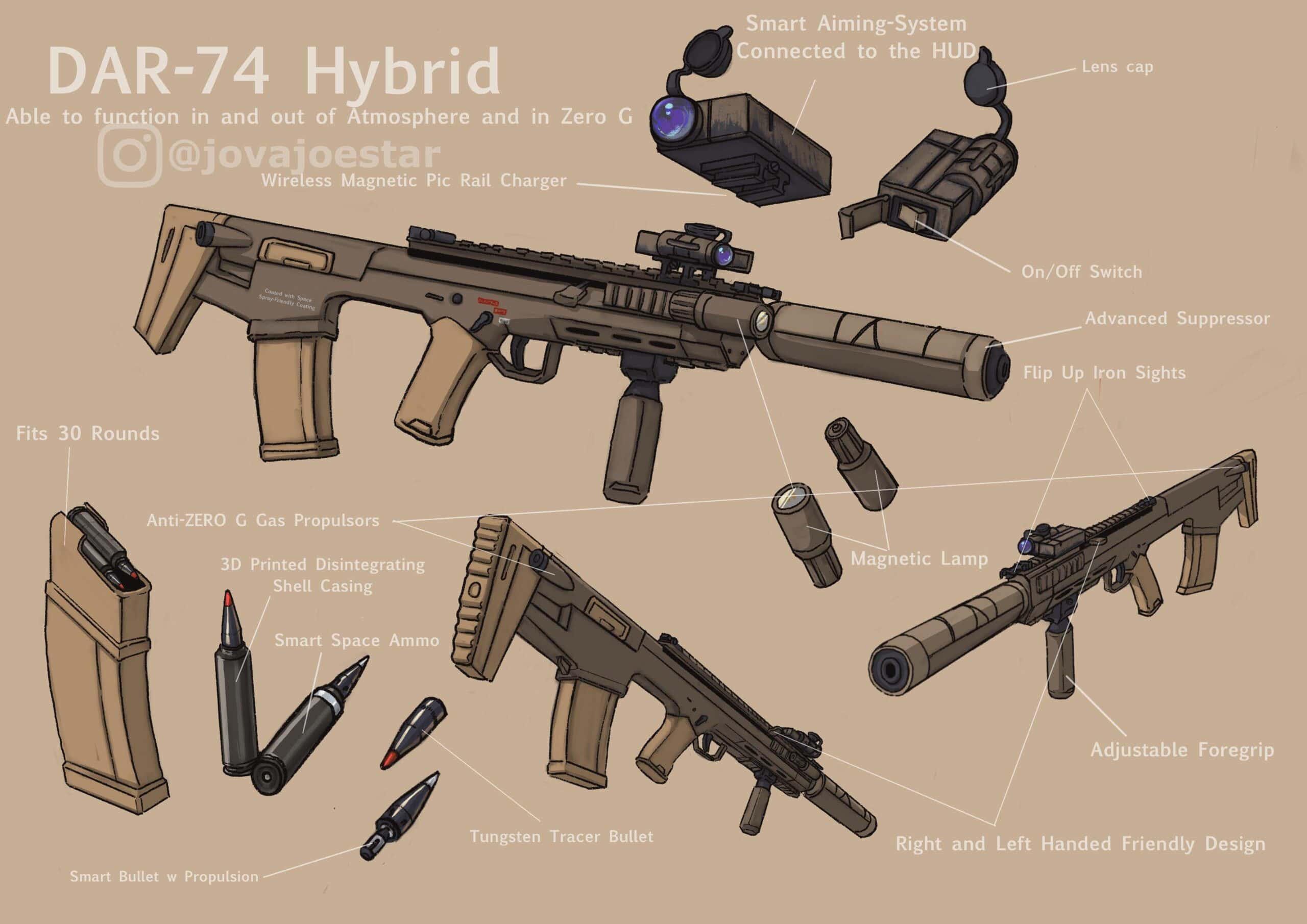The effective range of an AR-15 is approximately 400 to 600 yards. This depends on the shooter’s skill and ammunition used.
The AR-15 is one of the most popular rifles in the United States. Known for its versatility and accuracy, it’s widely used for hunting, sport shooting, and personal defense. The rifle’s effective range can significantly impact its performance in various scenarios.
Understanding the range capabilities helps shooters make informed decisions about their shooting activities. Many factors, including barrel length, ammunition type, and shooting conditions, can influence this range. Mastering the AR-15’s effective range enhances both accuracy and safety. Whether you are a novice or an experienced shooter, knowing these details is crucial for optimal use.
Introduction To Ar-15
The AR-15 is a popular, semi-automatic rifle. It’s widely used for various applications. Its design and functionality make it versatile. Many gun enthusiasts and professionals favor it.
Historical Background
The AR-15 was first developed in the 1950s. Eugene Stoner designed it for the Armalite Corporation. In 1959, Colt acquired the rights to the AR-15. The rifle’s design evolved over time.
Initially, it was used by the military. Later, it became available for civilians. The AR-15’s history reflects its durability and effectiveness. It’s a symbol of modern firearm technology.
Popularity And Usage
The AR-15 is popular in the United States. Its lightweight design appeals to many users. The rifle is used for:
- Hunting
- Sport shooting
- Home defense
Many law enforcement agencies use it. The AR-15 can be customized easily. Users can add various accessories. This flexibility increases its appeal.
The rifle’s effective range depends on several factors. These include:
- Ammunition type
- Barrel length
- Shooter’s skill
Typically, the AR-15 is accurate up to 300 yards. With the right setup, it can reach further. Understanding these factors helps maximize its performance.
Understanding Effective Range
The AR-15 is a popular rifle known for its versatility. Many gun enthusiasts want to know the effective range of an AR-15. This section will help you understand what the effective range is and what factors influence it.
Definition Of Effective Range
The effective range of a firearm is the distance it can accurately hit a target. This means the bullet will have enough power to reach and impact the target as intended. For an AR-15, the effective range varies based on several factors, including the type of ammunition and barrel length.
Factors Influencing Range
Many factors influence the effective range of an AR-15. These include:
- Ammunition Type: Different bullets have different ranges. Heavier bullets may have a shorter range but more power.
- Barrel Length: A longer barrel often means a longer range. Shorter barrels usually offer more maneuverability but less range.
- Weather Conditions: Wind and humidity can affect a bullet’s path. Wind can push the bullet off course, while humidity can slow it down.
- Shooter Skill: A skilled shooter can make the most of the rifle’s range. Practice and experience improve accuracy.
Below is a table summarizing the factors influencing the range:
| Factor | Impact on Range |
|---|---|
| Ammunition Type | Varies the distance and power |
| Barrel Length | Longer barrels increase range |
| Weather Conditions | Affects bullet trajectory |
| Shooter Skill | Improves accuracy |
Caliber Considerations
When discussing the effective range of an AR-15, understanding the caliber is crucial. Different calibers impact the range and performance. Let’s dive into how various calibers affect the AR-15’s range.
Common Calibers
The AR-15 can use multiple calibers. The most common ones include:
- .223 Remington
- 5.56 NATO
- 6.5 Grendel
- .300 Blackout
| Caliber | Muzzle Velocity (fps) | Effective Range (yards) |
|---|---|---|
| .223 Remington | 3,200 | 500 |
| 5.56 NATO | 3,100 | 600 |
| 6.5 Grendel | 2,500 | 800 |
| .300 Blackout | 2,100 | 400 |
Impact On Range
Each caliber’s range varies based on muzzle velocity and bullet design.
- .223 Remington: Effective up to 500 yards. Ideal for target shooting.
- 5.56 NATO: Effective up to 600 yards. Common in military use.
- 6.5 Grendel: Effective up to 800 yards. Known for long-distance accuracy.
- .300 Blackout: Effective up to 400 yards. Good for close-quarters combat.
Choosing the right caliber affects your shooting experience. Ensure you pick one that matches your needs.

Credit: www.ammoforsale.com
Barrel Length And Range
The AR-15 rifle is highly versatile, allowing for different barrel lengths. The barrel length directly affects the effective range and performance of the rifle. Understanding how barrel length impacts range helps shooters make informed choices.
Short Barrels
Short barrels, typically 10-14 inches, offer increased maneuverability. They are great for close-quarters combat and tactical situations. However, shorter barrels have limitations in range. They often result in reduced velocity and accuracy over long distances.
Advantages of short barrels:
- Easy to handle in tight spaces
- Lightweight and compact
- Quick target acquisition
Disadvantages of short barrels:
- Reduced bullet velocity
- Less effective at longer ranges
- Increased muzzle blast and noise
Long Barrels
Long barrels, generally 16-20 inches or more, are ideal for precision shooting. They provide higher bullet velocity and better accuracy over long distances. Long barrels are preferred for target shooting and hunting.
Advantages of long barrels:
- Increased bullet velocity
- Better accuracy at longer ranges
- Reduced muzzle blast
Disadvantages of long barrels:
- Heavier and less maneuverable
- More cumbersome in tight spaces
- Longer setup time
Choosing the right barrel length depends on your specific needs and shooting style. Whether you prefer the agility of a short barrel or the precision of a long barrel, understanding their impacts on range is crucial.
Ammunition Types
The effective range of an AR-15 depends on the ammunition used. Different types of rounds can change how far and accurate the rifle shoots. Understanding the types of ammunition is key to maximizing the AR-15’s performance.
Standard Rounds
Standard rounds are the most common ammunition for an AR-15. The .223 Remington and 5.56 NATO are popular options. These rounds are great for target practice and hunting small game.
The effective range for these rounds is usually around 300 to 500 yards. This range allows for accurate shooting in most conditions. The 5.56 NATO has a slightly higher pressure, making it a bit more powerful.
| Ammunition Type | Effective Range (yards) |
|---|---|
| .223 Remington | 300-500 |
| 5.56 NATO | 300-500 |
Specialty Rounds
Specialty rounds offer unique benefits for specific situations. These include hollow points, armor-piercing, and tracer rounds. Each type has a distinct purpose and can change the effective range of the AR-15.
Hollow points expand upon impact, making them ideal for self-defense. Their effective range is around 200 to 300 yards. Armor-piercing rounds are designed to penetrate tough targets, with an effective range of 400 to 600 yards. Tracer rounds allow shooters to see the bullet’s path, useful for training and night shooting. Their range is about 300 to 400 yards.
| Specialty Round | Effective Range (yards) |
|---|---|
| Hollow Points | 200-300 |
| Armor-Piercing | 400-600 |
| Tracer Rounds | 300-400 |
Optics And Sights
The AR-15 is a popular rifle known for its versatility. The effective range of an AR-15 can be influenced by various factors. One key factor is the type of optics and sights used. Different sights offer unique advantages. Let’s explore how iron sights and optical scopes impact the effective range of an AR-15.
Iron Sights
Iron sights are the basic sighting system on most rifles. They consist of two alignment points. These points are the front sight and the rear sight.
Iron sights are reliable and durable. They don’t require batteries or electronics. They’re ideal for short to medium ranges. The typical effective range with iron sights is around 200 to 300 yards.
Here’s a quick look at the pros and cons of iron sights:
| Pros | Cons |
|---|---|
| Simple and robust | Limited range |
| No batteries needed | Requires good eyesight |
| Lightweight | Less precise at long distances |
Optical Scopes
Optical scopes offer improved accuracy over longer distances. They use lenses to magnify the target. This makes it easier to see and aim at distant objects.
There are various types of optical scopes, including:
- Red dot sights for quick target acquisition
- Holographic sights for better field of view
- Telescopic sights for long-range precision
With optical scopes, the effective range of an AR-15 can extend to 500 yards or more. Some high-powered scopes can even reach 1,000 yards.
Here are the pros and cons of optical scopes:
| Pros | Cons |
|---|---|
| Better accuracy | Heavier than iron sights |
| Longer effective range | Requires batteries |
| Multiple magnification options | More expensive |
Environmental Factors
Understanding the effective range of an AR-15 involves many factors. One of the most crucial is the environment. Environmental factors can significantly affect accuracy and range. Let’s delve into how different conditions impact the AR-15’s performance.
Wind And Weather
Wind can alter the bullet’s path. Strong gusts can push bullets off course. Shooters need to adjust their aim to compensate. Wind speed and direction are essential to consider.
Weather conditions like rain and humidity also play a role. Moisture in the air can slow a bullet down. Rain can make the barrel slippery, affecting grip and control. Cold weather can stiffen the rifle, making it harder to handle.
| Factor | Impact |
|---|---|
| Wind | Alters bullet path, requires aim adjustment |
| Rain | Slows bullet, affects grip |
| Humidity | Slows bullet, reduces range |
| Cold | Stiffens rifle, reduces control |
Terrain And Elevation
Terrain impacts your shooting position. Uneven ground can make it tough to aim. Trees and rocks may obstruct your view. Finding a stable, clear spot is essential for accuracy.
Elevation changes affect bullet trajectory. Shooting uphill or downhill alters the bullet’s path. Higher elevation can increase range due to thinner air. Lower elevation can decrease range with denser air.
- Flat terrain: Easier to find stable shooting position.
- Hilly terrain: Requires more adjustments for stability.
- High elevation: Increases range due to thinner air.
- Low elevation: Decreases range due to denser air.
Environmental factors play a crucial role in the effective range of an AR-15. Both wind and weather, and terrain and elevation, can significantly affect performance. Understanding these elements helps improve accuracy and range.

Credit: washingtonmonthly.com
Practical Applications
The effective range of an AR-15 varies based on its use. Understanding these ranges helps in maximizing the rifle’s potential. Below, we explore the practical applications of the AR-15.
Hunting
The AR-15 is popular among hunters. Its effective range for hunting is about 300 yards. Many hunters appreciate its accuracy and versatility. Here are some reasons why:
- Lightweight design
- Customizable options
- Variety of calibers available
These features make it ideal for hunting small to medium-sized game. The AR-15 also allows for quick follow-up shots.
Target Shooting
For target shooting, the AR-15 can be very effective. Many shooters achieve accuracy at ranges up to 600 yards. Here are some key points:
| Range | Accuracy | Considerations |
|---|---|---|
| 100 yards | High | Best for beginners |
| 300 yards | Moderate | Good for intermediate shooters |
| 600 yards | Challenging | Requires skill and experience |
Target shooting with an AR-15 helps improve precision and focus.
Self-defense
The AR-15 is also used for self-defense. Its effective range for self-defense is up to 100 yards. This makes it suitable for both home defense and property protection. Key benefits include:
- High capacity magazines
- Easy to handle
- Reliable performance
These advantages ensure that the AR-15 is a dependable choice for self-defense situations.

Credit: www.80percentarms.com
Frequently Asked Questions
What Is The Maximum Effective Range Of An Ar-15?
The maximum effective range of an AR-15 is typically around 500 to 600 yards. This depends on the ammunition, barrel length, and shooter skill.
How Does Barrel Length Affect Ar-15 Range?
A longer barrel generally increases the effective range of an AR-15. This is due to higher bullet velocity and improved accuracy.
What Factors Influence Ar-15 Shooting Accuracy?
Several factors influence AR-15 shooting accuracy, including the type of ammunition, barrel quality, optics, and shooter experience.
Is An Ar-15 Effective For Long-range Shooting?
While an AR-15 can be used for long-range shooting, it is generally more effective for medium-range targets, up to 600 yards.
Conclusion
Understanding the effective range of an AR-15 is crucial for both enthusiasts and professionals. With proper training and ammunition, it can achieve impressive accuracy up to 600 yards. Always consider factors like barrel length and bullet type for optimal performance.
By knowing your rifle’s capabilities, you can make informed decisions in various scenarios.


